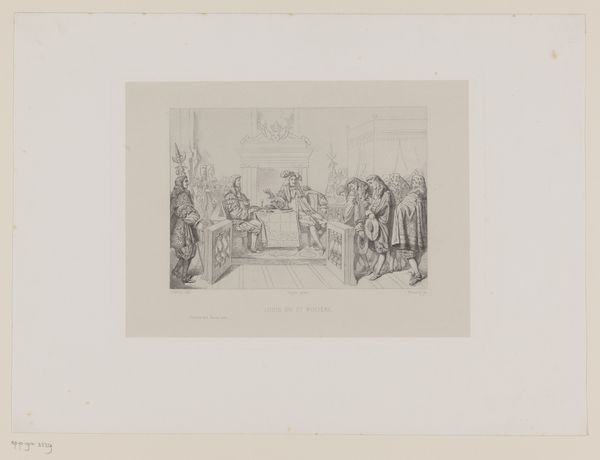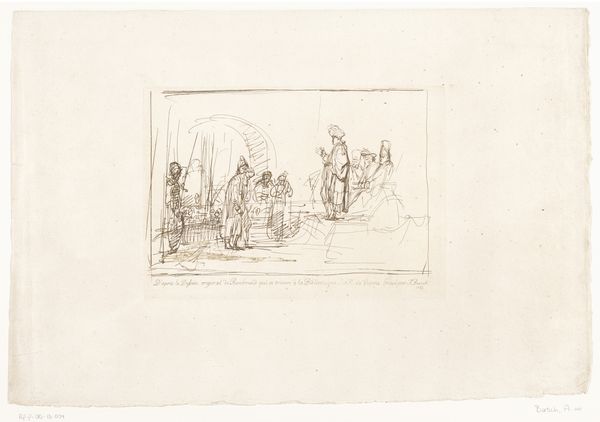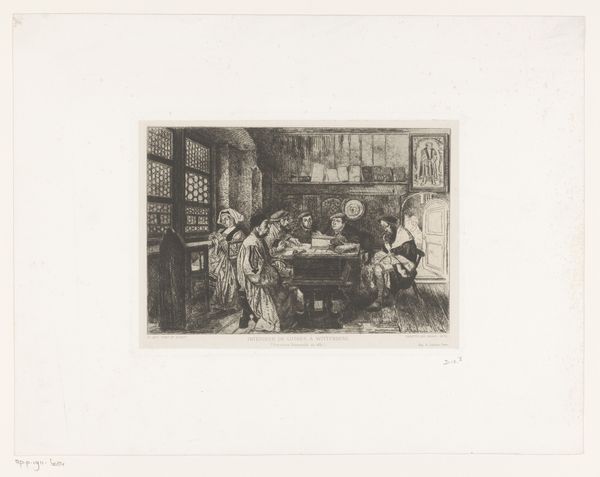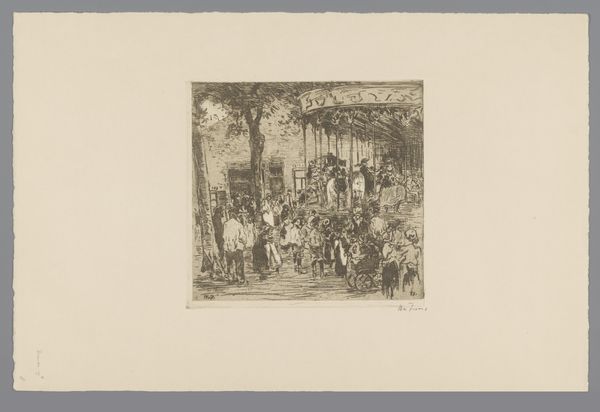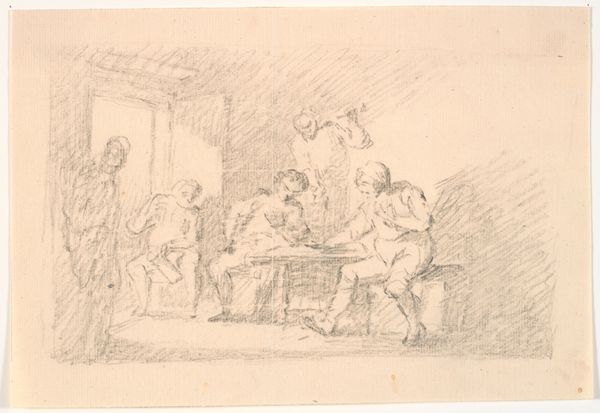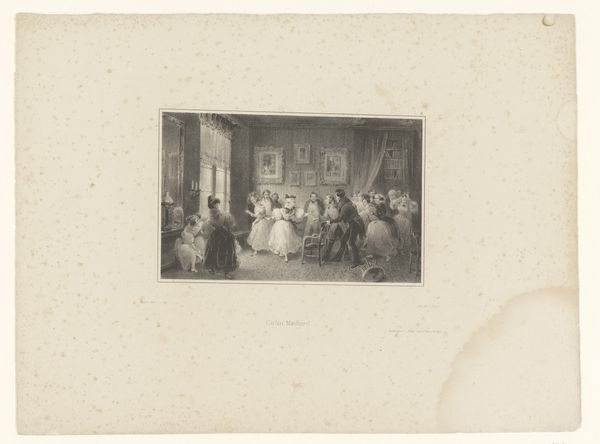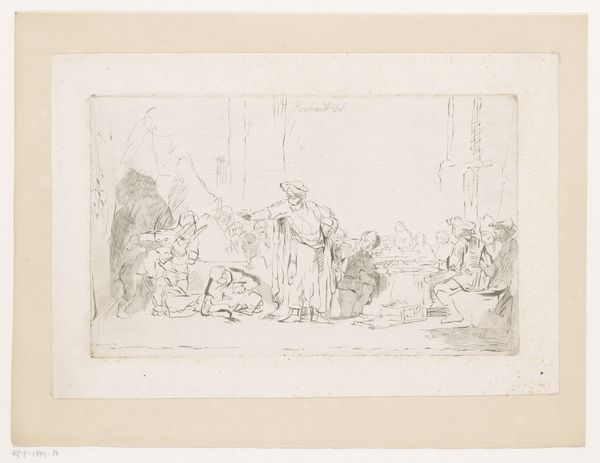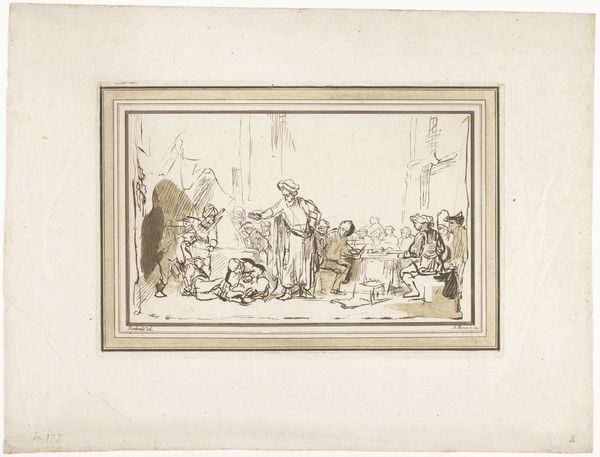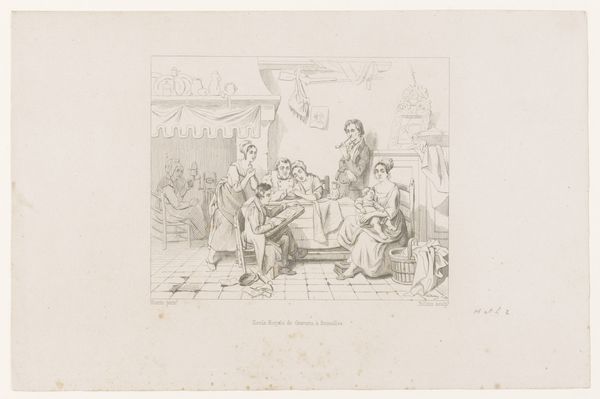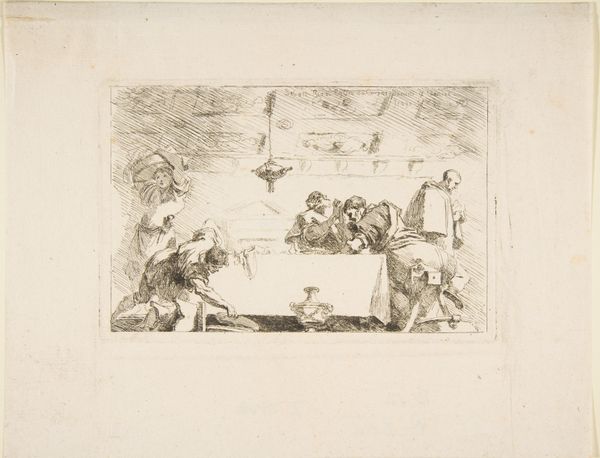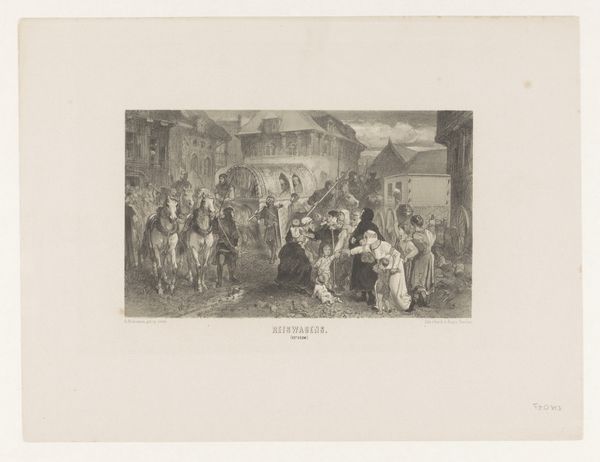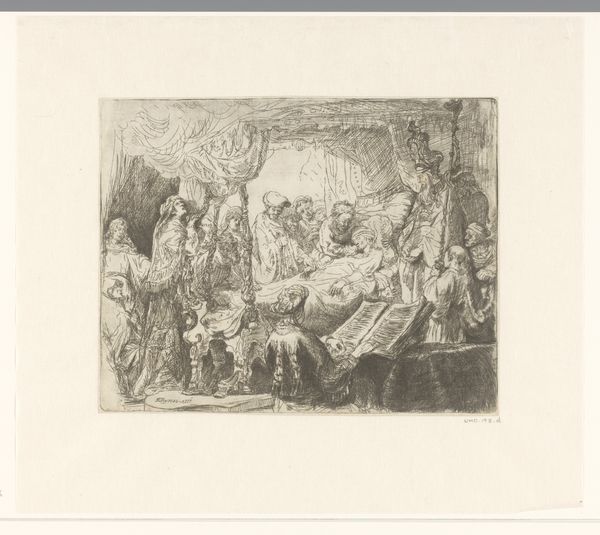
Drie soldaten aan een tafel op een binnenplaats, een van hen leest voor uit een boek 1842
0:00
0:00
drawing, print, etching
#
drawing
# print
#
etching
#
etching
#
genre-painting
#
history-painting
Dimensions: height 78 mm, width 158 mm
Copyright: Rijks Museum: Open Domain
Curator: This etching, made in 1842 by Edouard Hamman, presents a rather intriguing scene titled, "Three Soldiers at a Table in a Courtyard, One of Them Reading From a Book." It’s currently held here at the Rijksmuseum. Editor: The initial impression is one of casual disorder, really. Look at the density of lines! Yet within that controlled chaos, you see these pockets of clear structure – like the sturdy table at the work's center, seemingly holding everything together compositionally. Curator: Indeed. Note how the light strategically illuminates the central soldier, drawing our gaze into his very gesture. This concentrated focus creates a powerful axis mundi, reinforcing his pivotal role within the scene. Editor: While that's an excellent analysis of Hamman’s structural choices, I wonder about the materiality of the piece itself. The etching medium offers incredible potential for detail, for replicating different textures. You can really feel the grit of the courtyard. It pulls you in and makes you think of the working conditions of Hamman himself and even the trades involved in creating this image. Curator: Of course, and Hamman exploits the linear quality inherent in the etching process. The figures, meticulously rendered, gain dimension, though perhaps in contrast with how it might have been depicted if using broad, sweeping strokes of paint. Editor: Precisely! Consider also the consumption habits of the etching. Likely intended for a far broader circulation, to disseminate visual and perhaps political ideas efficiently through readily reproducible, inexpensive prints. Curator: Certainly, thinking about reception is vital. It provides this rather intimate window into an archetypal history-genre scene and how that functions formally within this context and historical tradition. The interplay of shadow and light suggests narrative potential, and there's almost an implied continuation of whatever happens beyond the scene represented here. Editor: Yes. Seeing these works also grounds those historical genre scenes by focusing on what remains and reminding viewers of the conditions that these types of materials endure across decades and centuries. I find this such an absorbing reflection of labour. Curator: The dialogue between formal composition and tangible process is a potent blend within Hamman’s work. It certainly grants ample avenues of thought regarding its overall symbolic construction and context. Editor: A really intriguing piece to analyze further! It’s certainly one that yields plenty of thoughts surrounding how artists in any media have continued these techniques.
Comments
No comments
Be the first to comment and join the conversation on the ultimate creative platform.
